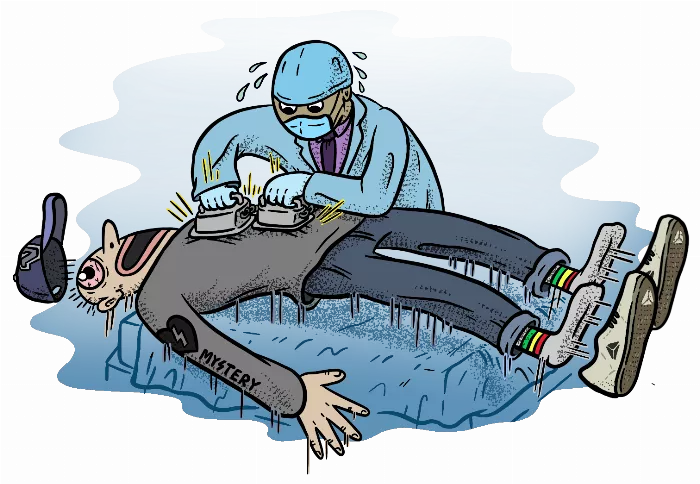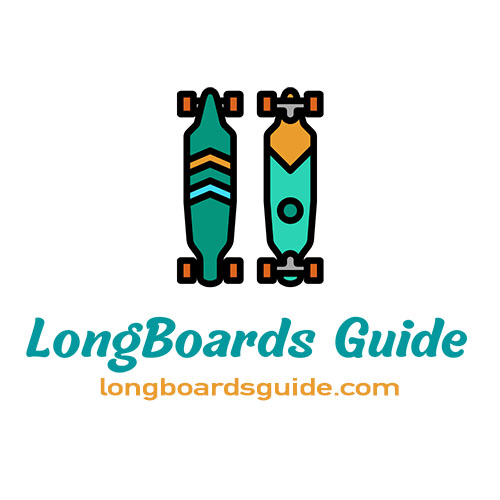Are you interested in learning how to longboard but are unsure where to begin?
Don’t worry; even the most experienced longboarders are unaware of the fundamentals of long-distance running.
Longboarding is challenging for beginners. In this post, we’ll talk about longboarding tips for beginners.
To avoid unexpected accidents and breakdowns, you should grasp the basics before embarking on your journey. Let’s dive in!
Longboarding Tips For Beginners
Get The Board
If you’re a novice, you’ll probably want a board that can go for a long time.
To pick a good board, you must first learn about the components that make up a skateboard, the skateboard size, and the different varieties of skateboards.
You can watch this video to learn how to pick the ideal starting board:
When capturing the art of extending, a longboard with significant length and width will allow for increased balance and firmer footwork.
Choose The Right Stance
You must have the proper posture and steps before you can ride.
If you’re right-handed, you’ll probably stand with your left foot in front and your right foot behind, which is known as the ‘normal’ stance.
So, why is taking a stand so important? Turning right will need you to tap your toes if you’re a regular. When turning to the left, you must press your heel into the ground.
Besides, if you’re a jerk, you need to do the exact opposite to turn things around. This is something to keep in mind when you strive to master new skills.
Stay Balance
Anyone new to longboarding must first become accustomed to balancing on the board before proceeding.
Placing the board on a thick carpet or even grass is one of the greatest ways.
Because the friction will be extremely considerable, this will prevent the board from rolling.
Step slowly onto the table for a natural and comfortable position. Your feet and shoulders should be about the same distance apart.
It could, of course, be a little wider. The pins may be on top of or close to the truck’s bolts, depending on the length of your board.
Your left hind foot should be perpendicular to the deck if you’re “goofy”. Or, your right hind foot should be perpendicular to the deck if you’re “regular”.
The forefoot will be somewhat slanted to that deck, perhaps at a 45-degree angle. Bend your knees slightly, and then lean forward slightly to feel stable.
The idea is to be able to stand on the board without constantly worrying about stepping down.
Make A Flawless Turn
Learning how to turn will come in handy down the road, and it’s much easier than you think.
You have to lean to one side and turn in the direction you want to go, and the board will dip a little and change direction.
The more force you apply to your foot, the easier it is to change direction.
Long tables are more adaptable, making turning easy and straightforward.
For practice, utilize grass or carpet. The board’s wheels will not roll during practice if you do this.
While you practice shifting your body’s weight, the deck still tilts to the sides.
Rotating your ankle such that the deck leans to each edge is a good idea.
After all, you’ll turn in the same direction when you’re riding. Then, by locking your ankles, you can tilt your board by transferring your weight back (heels) or forward (forefoot) (toes).
Work On Push And Brake Postures
To play for the long run, you’ll need to master some crucial techniques. One of them is balancing on one foot while pushing or braking.
Rotate your front foot so that your toes point toward your nose as you stand on a longboard.
Also, it would be best if you practiced on the carpet or grass. Rotate your hips as well as your shoulders forward while rotating your feet.
Then, pull your back foot off the board while balancing on your front foot. You should swiftly steady with your front foot turned forward.
Next, move your weight to your front leg and bend your knee. This will assist you in lowering your rear foot.
Move your weight to your front leg and bend your knee. If you do this, you won’t have to move your hips, and your back foot will be closer to the ground.
Squat on your front leg and touch your rear foot to the ground for seconds.
Return your foot to the beginning position by bringing it back toward the board and rotating your front feet, hips, and shoulders.
Because the deck is always tilted to one side, you may find this exercise difficult at first. As a result, balancing on one foot will be challenging.
Practice Rolling
It’s time to move when you’ve covered all of the static-mode fundamentals. With a modest inclination, get on the board and roll it through a parking lot or driveway.
Push-ups are the next step. Rotate your shoulders and front foot forward, lower your rear leg, and push lightly to increase momentum.
You’ll quickly discover that increasing your speed provides more stability, making balancing much easier.
Remember not to exert too much stress on the front foot when walking on uneven surfaces.
Also, avoid shifting your weight backward. It will be simpler for the front wheel to roll over cobblestones or cracks if you do this.
You can start kicking harder for additional momentum once you’ve gotten used to completing push-ups.
You must not, however, run faster than your current running speed.
Slowly and carefully roll on a level surface. You will feel much more stable and balanced if you keep your center of gravity low.
Before going all out, you’ll want to acquaint yourself with the long board’s physics, adapt to how it rolls, maintain your balance, and make sure you’ve mastered your stance.
Ride On The Mid Hill
You can ride on a slight incline once you’ve mastered balance, flat riding, and braking.
Look for one that terminates in a hill or a level area. Of course, it should never cross a road.
Don’t attempt to climb a hill until you’re certain you’re capable of doing so.
Start at the bottom of the hill if the one you can reach is too steep.
After that, take it one step at a time until you gain confidence. There’s nothing more dangerous than losing control on a steep climb.
After all, if you aren’t prepared, you will undoubtedly crash. Choose a hill that isn’t too steep so you may gradually improve your technique.
Bend Your Knees
When braking or pedaling downhill on a longboard, keep your knees bent.
This will allow you to lower your center of gravity and become more steady and firm on the longboard, reducing the chance of falling.
Bending the knee also allows the leg to act as a suspension, absorbing bumps or uneven surfaces.
Learn To Carve
Before coming to a complete stop, carving will help moderate your speed while also ensuring that your direction of movement remains straight ahead.
To decrease your center of gravity, bend your knees, lean forward, and shift your weight onto your toes.
Then, while still in a low position with your knees bent to touch the edge of your heels, your weight is on your heels.
Learn To Fall
Learning to fall is a necessary step in the longboarding process. It may appear frightening, but you will fall sooner or later.
It’s all part of the learning process, and if you learn how to fall properly, you’ll be able to fall safely and overcome your fear of falling while driving.
When you fall, you may want to swing your arms, but instead, bring your arms to your body so that they are above your forearms and roll over your shoulders.
To get used to the technique, you’ll need a lot of practice. It’s great to start by practicing on a pile of pillows or an exercise mat.
Practice Sliding
This is a challenging technique. It’s simple to add but not so simple to finish.
Sliding can be done in various ways, each of which will be easier for some and more difficult for others.
Standing up and sliding will be much easier to learn with practice if you’re not too fast. At high speeds, though, remember that skating down is nearly always a safer bet.
Safety Precautions For Beginners
Keep the following suggestions in mind when you’re first starting your learning journey to prevent the unexpected.
- Always remember to wear a helmet.
- Wear knee, hip, and elbow protectors and other protective gear.
- Wear leather or suede shoes and avoid testing on uneven areas.
- To avoid serious injury, try to roll if you fall.
- You should warm up first before beginning to skateboard. This will assist muscles in loosening up and reduce muscle strain when playing.
Conclusion
Longboarding is an exciting and thrilling sport. It’s a fantastic method to rejuvenate yourself while also maintaining good health.
If you’re just getting started with longboarding, we hope these longboarding tips for beginners are useful.
You will be able to run your longboard smoothly if you follow the above principles.
After a given amount of practice, you should be able to master your longboard.






